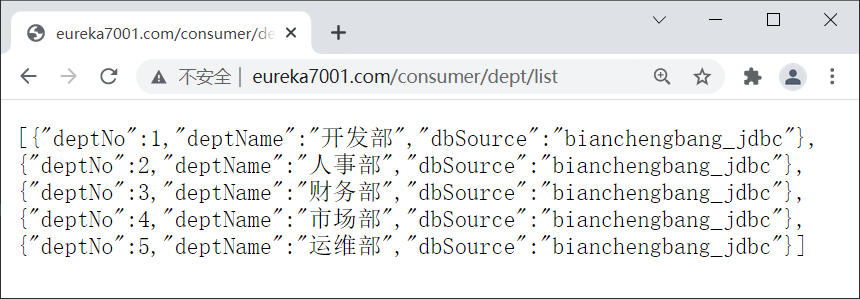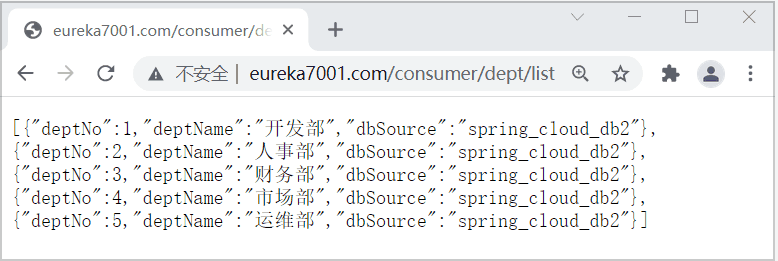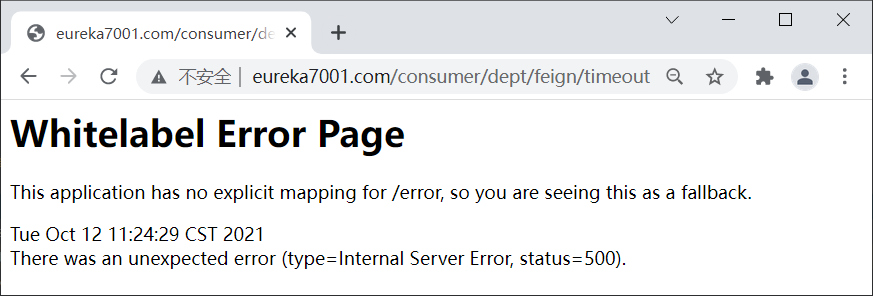OpenFeign:Spring Cloud声明式服务调用组件(非常详细)
Feign 对 Ribbon 进行了集成,利用 Ribbon 维护了一份可用服务清单,并通过 Ribbon 实现了客户端的负载均衡。
Feign 是一种声明式服务调用组件,它在 RestTemplate 的基础上做了进一步的封装。通过 Feign,我们只需要声明一个接口并通过注解进行简单的配置(类似于 Dao 接口上面的 Mapper 注解一样)即可实现对 HTTP 接口的绑定。
通过 Feign,我们可以像调用本地方法一样来调用远程服务,而完全感觉不到这是在进行远程调用。
Feign 支持多种注解,例如 Feign 自带的注解以及 JAX-RS 注解等,但遗憾的是 Feign 本身并不支持 Spring MVC 注解,这无疑会给广大 Spring 用户带来不便。
2019 年 Netflix 公司宣布 Feign 组件正式进入停更维护状态,于是 Spring 官方便推出了一个名为 OpenFeign 的组件作为 Feign 的替代方案。
OpenFeign
OpenFeign 全称 Spring Cloud OpenFeign,它是 Spring 官方推出的一种声明式服务调用与负载均衡组件,它的出现就是为了替代进入停更维护状态的 Feign。OpenFeign 是 Spring Cloud 对 Feign 的二次封装,它具有 Feign 的所有功能,并在 Feign 的基础上增加了对 Spring MVC 注解的支持,例如 @RequestMapping、@GetMapping 和 @PostMapping 等。
OpenFeign 常用注解
使用 OpenFegin 进行远程服务调用时,常用注解如下表。注解 | 说明 |
|---|---|
@FeignClient | 该注解用于通知 OpenFeign 组件对 @RequestMapping 注解下的接口进行解析,并通过动态代理的方式产生实现类,实现负载均衡和服务调用。 |
@EnableFeignClients | 该注解用于开启 OpenFeign 功能,当 Spring Cloud 应用启动时,OpenFeign 会扫描标有 @FeignClient 注解的接口,生成代理并注册到 Spring 容器中。 |
@RequestMapping | Spring MVC 注解,在 Spring MVC 中使用该注解映射请求,通过它来指定控制器(Controller)可以处理哪些 URL 请求,相当于 Servlet 中 web.xml 的配置。 |
@GetMapping | Spring MVC 注解,用来映射 GET 请求,它是一个组注解,相当于 @RequestMapping(method = RequestMethod.GET) 。 |
@PostMapping | Spring MVC 注解,用来映射 POST 请求,它是一个组注解,相当于 @RequestMapping(method = RequestMethod.POST) 。 |
Spring Cloud Finchley 及以上版本一般使用 OpenFeign 作为其服务调用组件。由于 OpenFeign 是在 2019 年 Feign 停更进入维护后推出的,因此大多数 2019 年及以后的新项目使用的都是 OpenFeign,而 2018 年以前的项目一般使用 Feign。
Feign VS OpenFeign
下面我们就来对比下 Feign 和 OpenFeign 的异同。
相同点
Feign 和 OpenFegin 具有以下相同点:
Feign 和 OpenFeign 都是 Spring Cloud 下的远程调用和负载均衡组件。
Feign 和 OpenFeign 作用一样,都可以实现服务的远程调用和负载均衡。
Feign 和 OpenFeign 都对 Ribbon 进行了集成,都利用 Ribbon 维护了可用服务清单,并通过 Ribbon 实现了客户端的负载均衡。
Feign 和 OpenFeign 都是在服务消费者(客户端)定义服务绑定接口并通过注解的方式进行配置,以实现远程服务的调用。
不同点
Feign 和 OpenFeign 具有以下不同:
Feign 和 OpenFeign 的依赖项不同,Feign 的依赖为 spring-cloud-starter-feign,而 OpenFeign 的依赖为 spring-cloud-starter-openfeign。
Feign 和 OpenFeign 支持的注解不同,Feign 支持 Feign 注解和 JAX-RS 注解,但不支持 Spring MVC 注解;OpenFeign 除了支持 Feign 注解和 JAX-RS 注解外,还支持 Spring MVC 注解。
OpenFeign 实现远程服务调用
下面我们就通过一个实例,来演示下通过 OpenFeign 是如何实现远程服务调用的。1. 在 spring-cloud-demo2 下创建一个名为 micro-service-cloud-consumer-dept-feign 的 Spring Boot 模块,并在 pom.xml 中添加以下依赖。
<?xml version="1.0" encoding="UTF-8"?>
<project xmlns="http://maven.apache网站站点" rel="nofollow" />
server:
port: 80
eureka:
client:
register-with-eureka: false #服务消费者可以不向服务注册中心注册服务
service-url:
defaultZone: http://eureka700网站站点" rel="nofollow" />
package net.biancheng.c.service;
import net.biancheng.c.entity.Dept;
import org.springframework.cloud.openfeign.FeignClient;
import org.springframework.stereotyp网站站点" rel="nofollow" />
package net.biancheng.c.controller;
import net.biancheng.c.entity.Dept;
import net.biancheng.c.service.DeptFeignService;
import org.springframework.web.bind.annotation.PathVariable;
import org.springframework.web.bind.annotation.RequestMapping;
import org.springframework.web.bind.annotation.RestController;
import javax.annotation.Resource;
import java.util.List;
@RestController
public class DeptController_Consumer {
@Resource
private DeptFeignService deptFeignService;
@RequestMapping(value = "/consumer/dept/get/{id}")
public Dept get(@PathVariable("id") Integer id) {
return deptFeignService.get(id);
}
@RequestMapping(value = "/consumer/dept/list")
public List<Dept> list() {
return deptFeignService.list();
}
}
5. 在主启动类上添加 @EnableFeignClients 注解开启 OpenFeign 功能,代码如下。
package net.biancheng.c;
import org.springframework.boot.SpringApplication;
import org.springframework.boot.autoconfigure.SpringBootApplication;
import org.springframework.cloud.openfeign.EnableFeignClients;
@SpringBootApplication
@EnableFeignClients //开启 OpenFeign 功能
public class MicroServiceCloudConsumerDeptFeignApplication {
public static void main(String[] args) {
SpringApplication.run(MicroServiceCloudConsumerDeptFeignApplication.class, args);
}
}
Spring Cloud 应用在启动时,OpenFeign 会扫描标有 @FeignClient 注解的接口生成代理,并注人到 Spring 容器中。
6. 依次启动服务注册中心集群、服务提供者以及 micro-service-cloud-consumer-dept-feign,启动完成后,使用浏览器访问“http://eureka700网站站点" rel="nofollow" />

图1:OpenFeign 实现远程服务调用
7. 连续多次访问“http://eureka700网站站点" rel="nofollow" />

图2:OpenFeign 负载均衡



